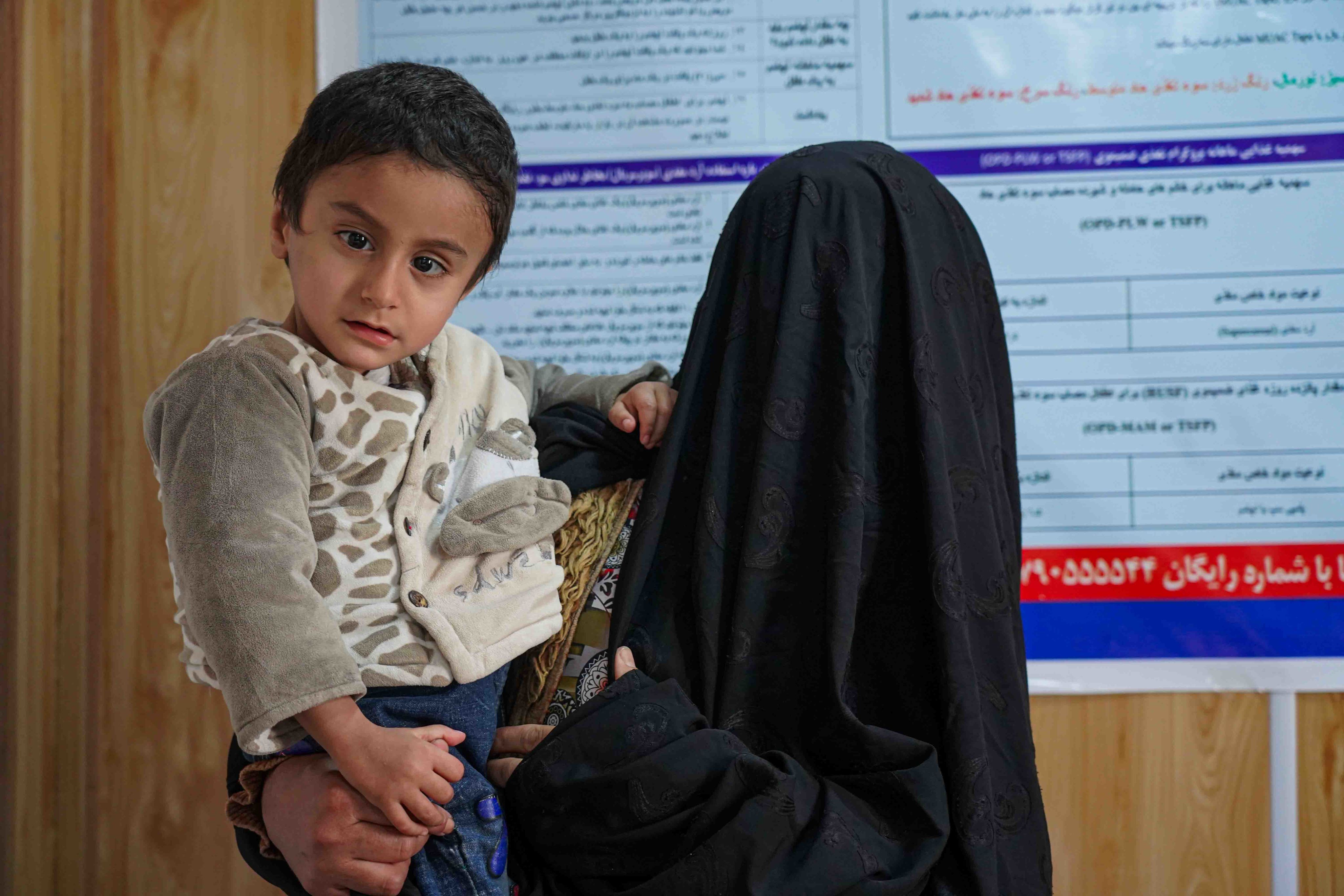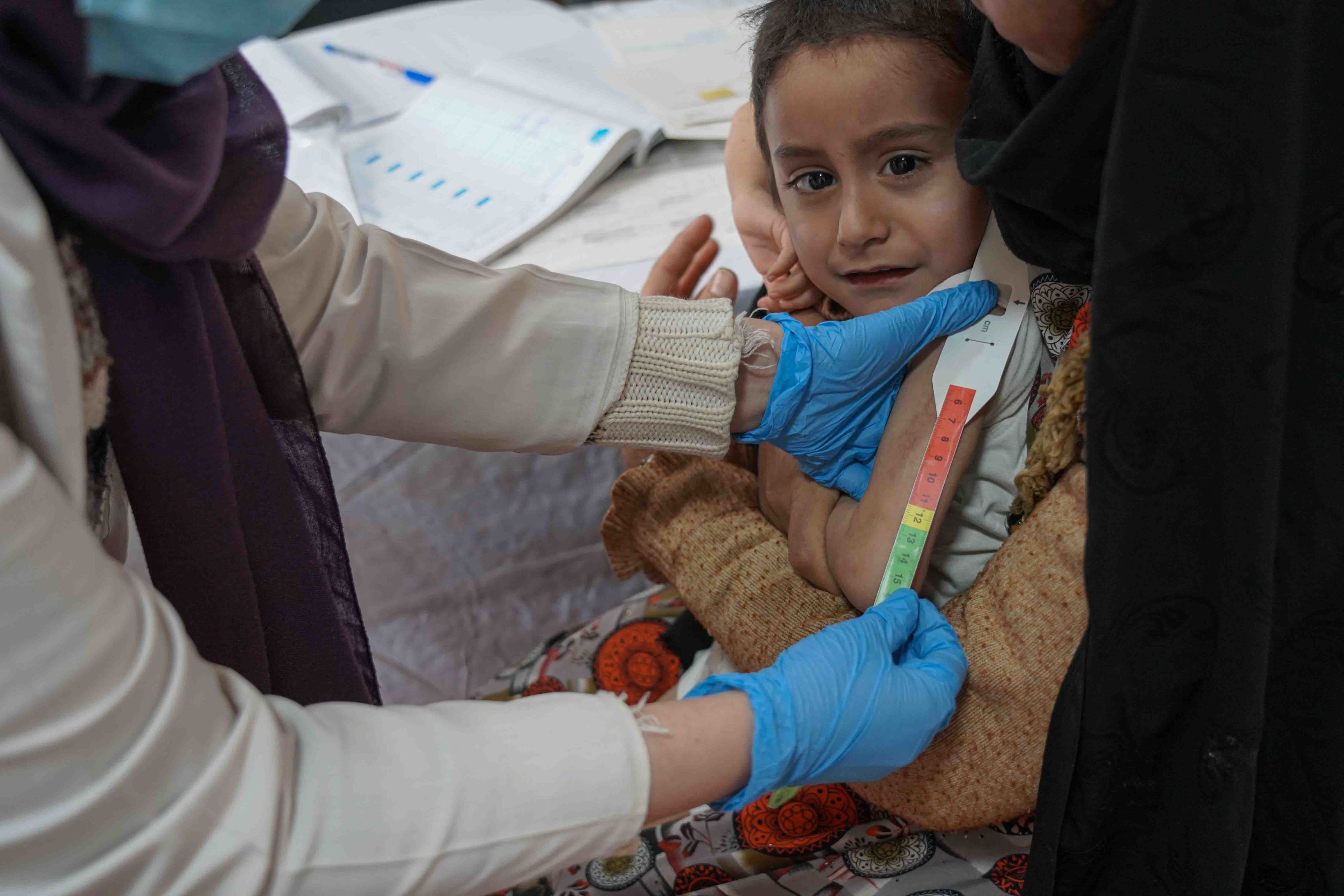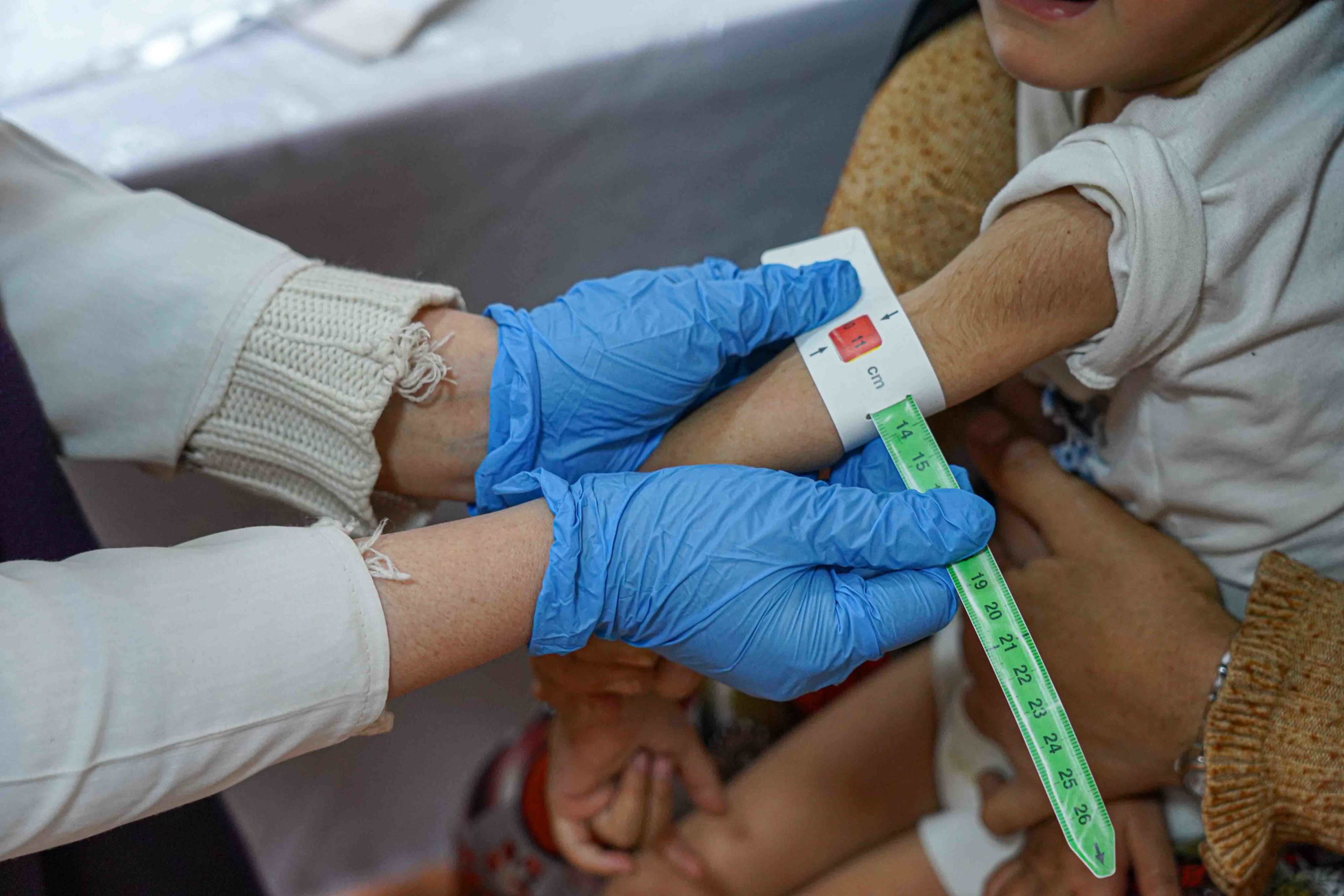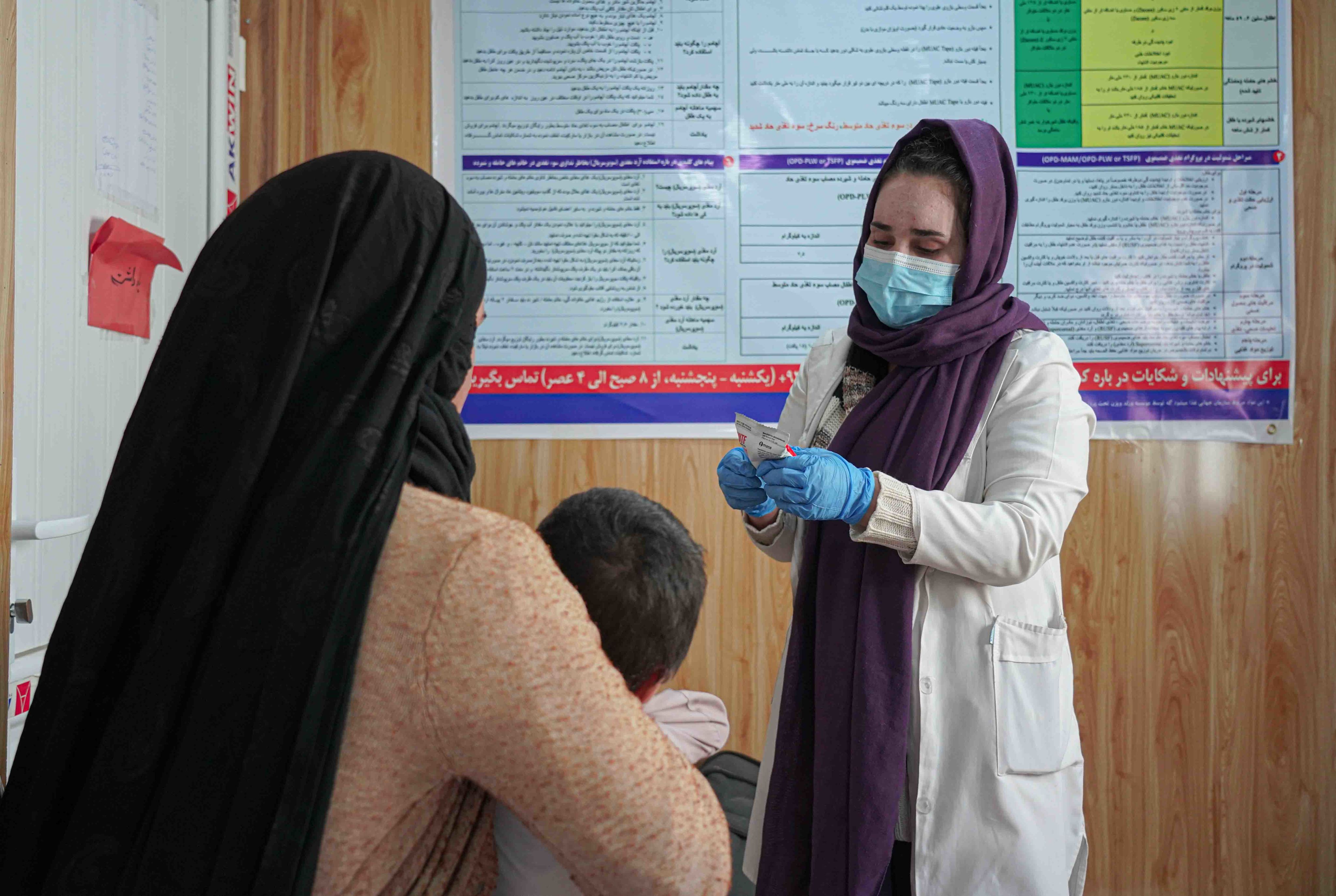Inside a Health Clinic
An Afghan mother’s desperate plea as she faces losing a third child to malnutrition
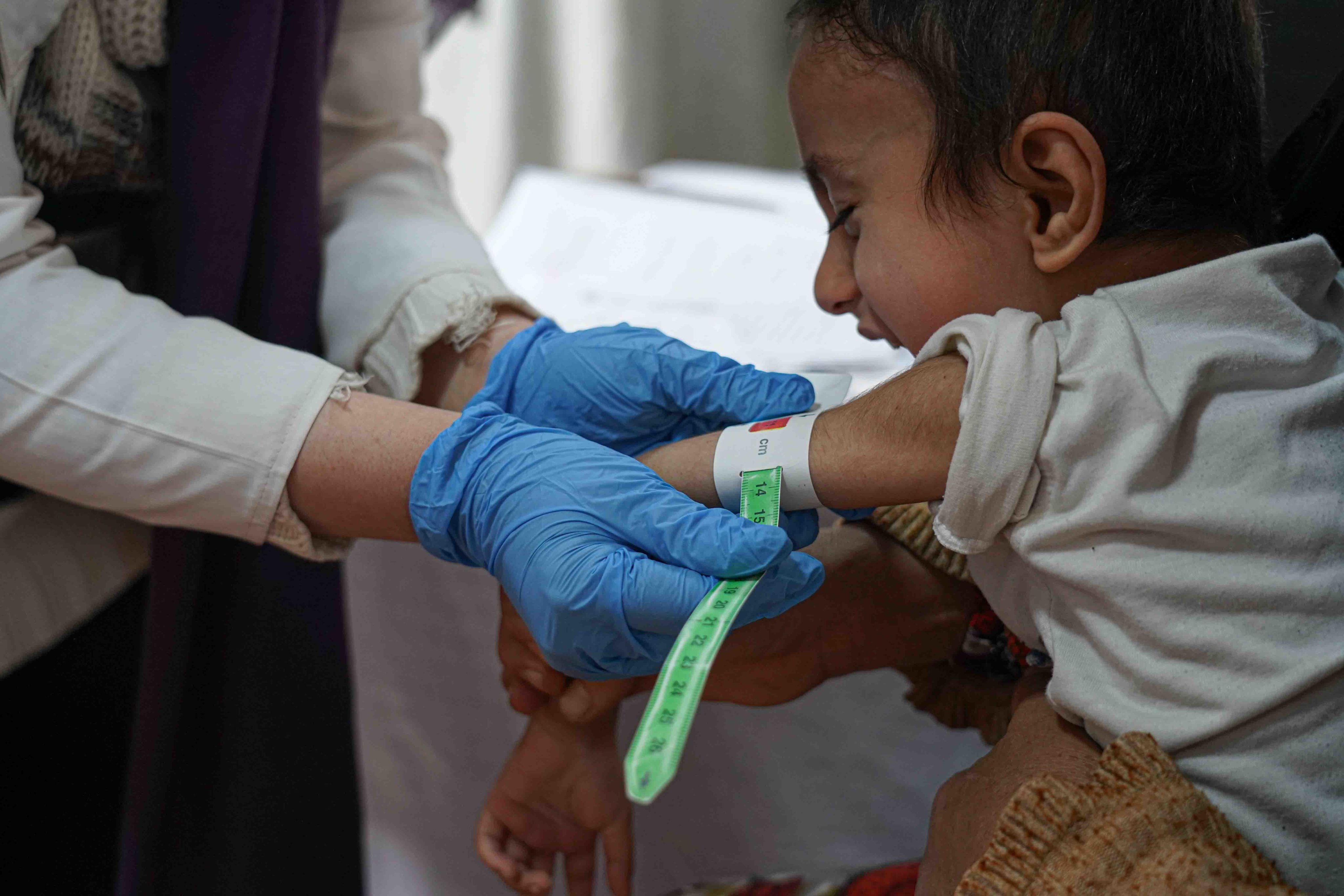
Jamila* stands, her four-year-old son Habiburahman in her arms, as they wait for a malnutrition screening at World Vision’s clinic, located in the rural part of Herat province, western Afghanistan.
Jamila* stands, her four-year-old son Habiburahman in her arms, as they wait for a malnutrition screening at World Vision’s clinic, located in the rural part of Herat province, western Afghanistan.
Herat province, Afghanistan – “I’ve already lost two children to malnutrition. I don’t want to lose a third one,” says Jamila*, her dark brown eyes betraying extreme tiredness as she holds her four-year-old son Habiburahman tightly in her arms, shifting her weight from one foot to the other.
The air in the clinic is stifling and thick, as the main hall is overcrowded with dozens of mothers and their children waiting to be seen by a doctor.
Habiburahman lies silently, his thin limbs draped over his mother’s shoulders, amid the mewling of ill infants.“He grows weaker by the day. And now he has a fever, a sore throat and a cough,” his mother, Jamila, confides as she waits in the queue.
Mothers stand shoulder to shoulder, some balancing infants on their hips, others clutching toddlers against their chests. They wait, their eyes fixed on the nutritionist’s door, as she opens and closes it every ten minutes, calling names, pressing fingers to tiny wrists, and measuring fragile arms with coloured Mid-Upper Arm Circumference (MUAC) tapes.
*Name has been changed to protect the identity of the subject
Starting early in the morning, the clinic fills with mothers and children, the only medical facility accessible within a 75 km radius in this remote area of Herat province.
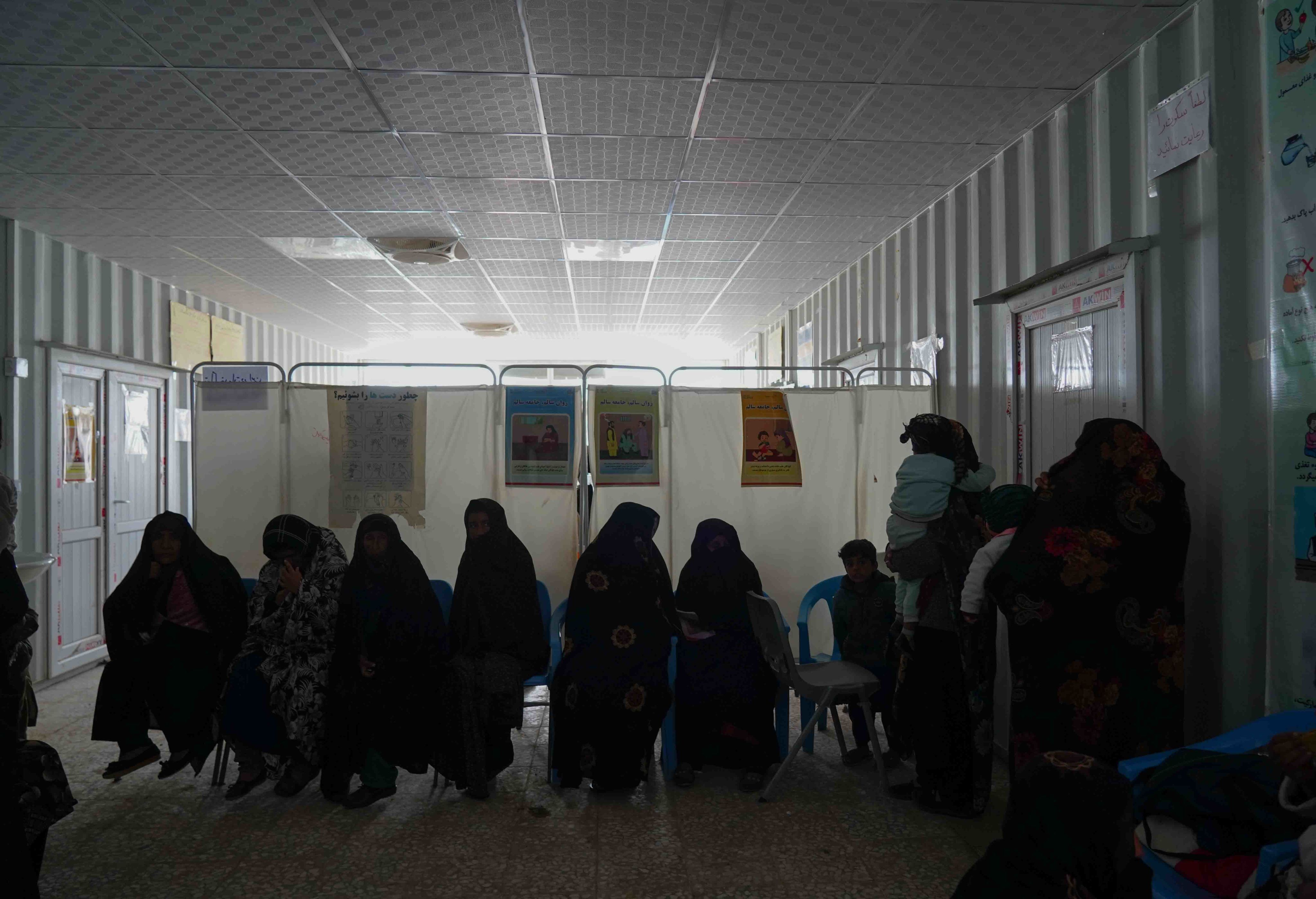
“Every day, we admit 50 patients and screen them for malnutrition,” says Mozhgan, the nutritionist at the World Vision-run clinic. She uses the MUAC measuring tape to determine the severity of their condition, diligently checking their height and weight against standard measures.
“Malnourished children fall into two categories,” explains Mozhgan. One is severe acute malnutrition (SAM) – when diagnosed, they receive ready-to-use therapeutic food (RUFT), a nutrient-dense paste that requires no preparation or cooking, on a daily basis. They come for weekly check-ups for two to three months until they recover. “SAM significantly increases the risk of death, especially for children under five, due to organ failure and occurring infections,” she continues.
The second category is moderate acute malnutrition (MAM), and to recover, they take daily supplementary food and come for check-ups every two weeks, taking up to three months to ameliorate their condition. “MAM is less severe than SAM but still requires intervention to prevent deterioration into more severe malnutrition and its associated risks, including death,” adds the nutritionist, as she calls Jamila.
A small electric heater is turned on to keep the room warm. Jamila carefully removes the two layers of clothing from her little boy, while Mozhgan quickly walks her through the procedure that is about to take place. Habiburahman’s tiny body begins to move restlessly as his mother reaches the last layer of clothing.
Mozhgan, the nutritionist at the World Vision-run clinic, guides a mother on how to administer malnutrition treatment to her child.
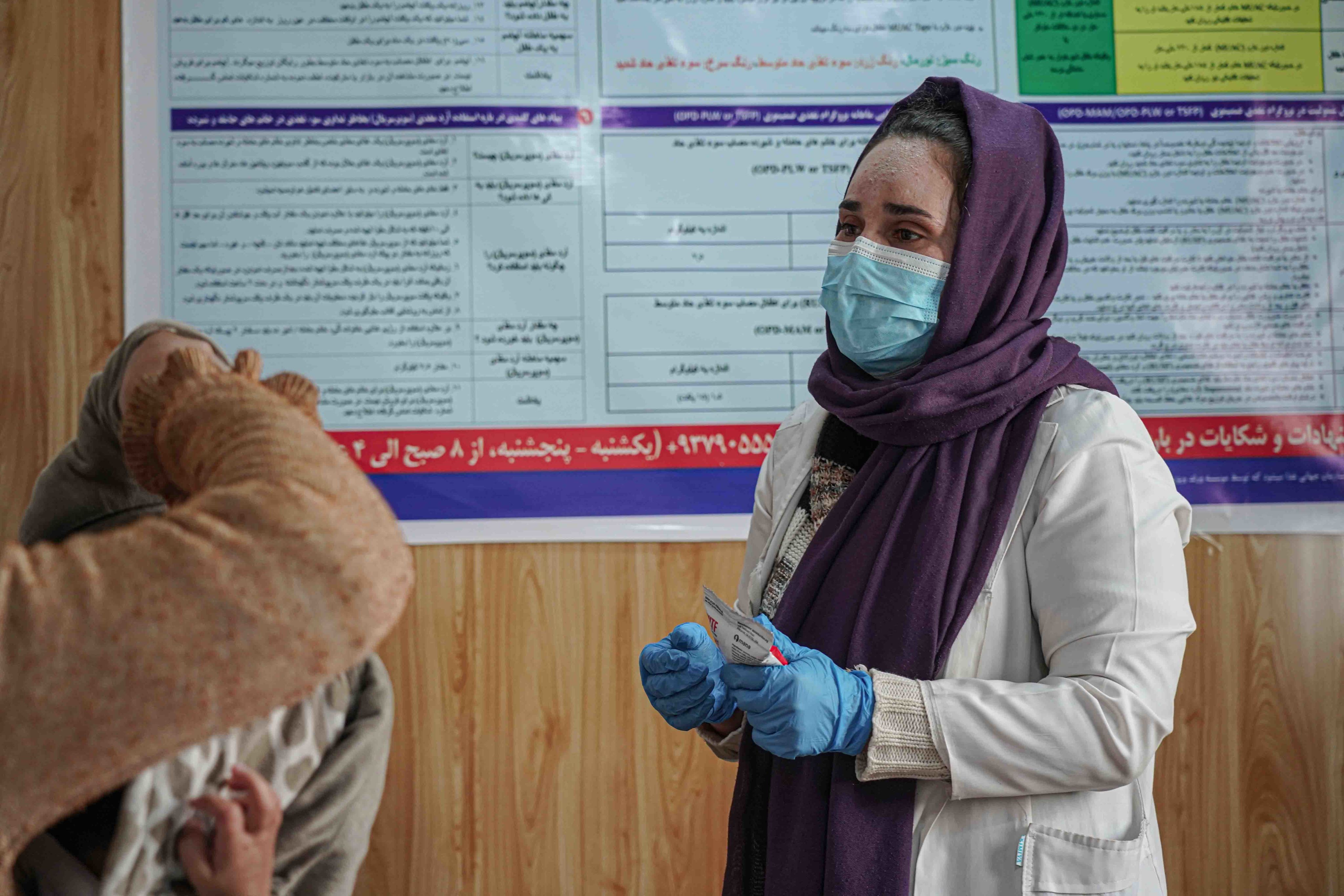
His limbs, thin and frail, lack the softness and roundness typical of a four-year-old. His arms and legs seem too delicate, the bones pressing through his pale, drawn skin.
As Mozhgan carefully wraps the MUAC tape around his arm, little Habiburahman begins to cry, his tiny body squirming helplessly in his mother’s arms.
“Before Habiburahman, I had a beautiful baby girl. She was one year old when I lost her to malnutrition,” says Jamila. “A year before her passing, another of my children died. She suffered from epilepsy and malnutrition, and was paralyzed for seven years. One day, blood poured from her mouth. Minutes later, she was gone,” she continues, her eyes filled with tears.
Acute malnutrition is merely one in a chain of afflictions pushing the country’s already fragile health systems to the brink. Each month, Mozhgan screens around 400 people for malnutrition, on average monitoring about 60 SAM cases, and 150 MAM cases. And this is the reality of only one small clinic, covering a remote area, which doesn’t have any health facilities within 75 kilometres.
Across the country, Afghanistan’s healthcare system is crumbling under the weight of inadequate infrastructure, underfunding, and a critical shortage of medical professionals. In 2024 alone, the closure of 288 primary healthcare facilities, including vital Mobile Health and Nutrition Teams (MHNTs), cut off 3.3 million people from essential medical care.
For five consecutive years, acute malnutrition has persisted, affecting nearly 3 million children under five. The crisis has deepened and is set to escalate. By 2025, projections warn that 3.5 million children will be acutely malnourished, including 857,000 suffering from severe acute malnutrition – a condition that, without urgent intervention, leads to death.
Habiburahman, 4, is screened for malnutrition, starting with the Mid-Upper Arm Circumference (MUAC) measurement.
Habiburahman, 4, is screened for malnutrition, starting with the Mid-Upper Arm Circumference (MUAC) measurement.
For children under five, Severe Acute Malnutrition (SAM) is diagnosed when the MUAC measurement is less than 12 cm. A red color indicates the child is at high risk and urgently requires nutritional support and medical attention.
For children under five, Severe Acute Malnutrition (SAM) is diagnosed when the MUAC measurement is less than 12 cm. A red color indicates the child is at high risk and urgently requires nutritional support and medical attention.
After taking the MUAC, height, and weight measurements, Mozhgan prepares to inform Jamila about her son's condition and get the necessary treatments ready.
After taking the MUAC, height, and weight measurements, Mozhgan prepares to inform Jamila about her son's condition and get the necessary treatments ready.
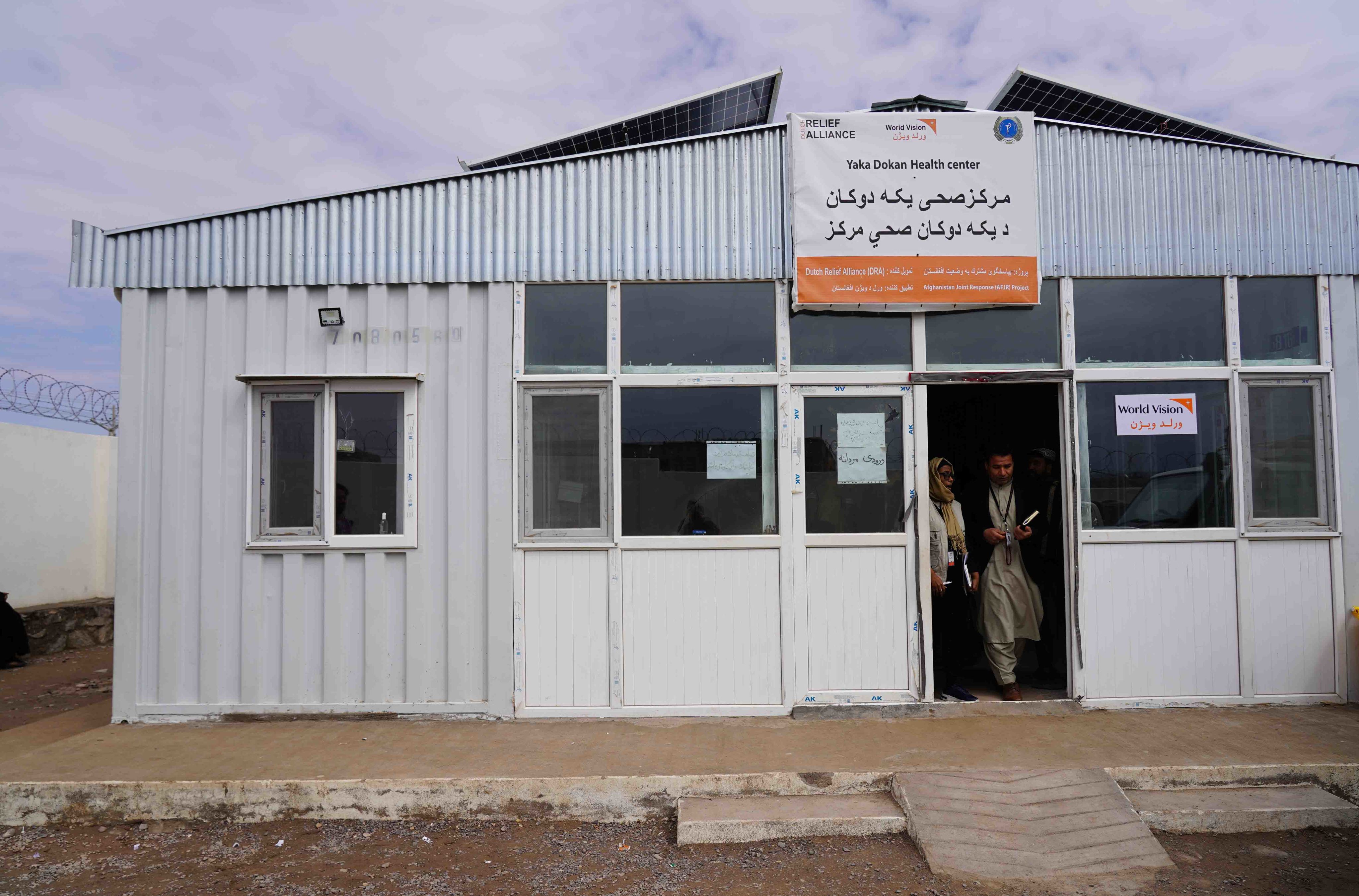
“Hundreds of cases are recorded every month. We advise them to include protein-rich foods like beans in their diet, but they all tell us the same thing: We can’t afford them,” says Mozhgan.
As she reaches the third stage of screening, placing Habiburahman onto the grey scale, his cries intensify, sharp and desperate. His mother steadies him from the other side, her hands trembling slightly, her face tight with worry.
“He suffers from severe acute malnutrition,” says Mozhgan as she scribbles her final notes on the chart. The four-year-old boy stops crying, but his weakness deepens. He urgently needs three months of treatment.
“Some days, we manage one meal. Other days, we have none,” Jamila says. Her family survives on 50,000 Afghanis a year – barely US $700 – to feed 15 people: her six children, her husband’s second wife and her five children, and her mother-in-law. They all share a small three-room house.
Jamila got married at 15. Now 32, her life is wholly bound up with raising her children. Her husband, a mullah, spends his days leading prayers, teaching at the madrassa, and offering counsel.
To put food on the table, the family would sometimes work in the fields, planting lentils on borrowed land in exchange for a share of the harvest. “Our village has no water source to nourish the crops, so we wait for rain,” explains Jamila.
Poverty drives malnutrition, but it also drives child labor, early marriage, and absence from education, trapping families in a generational cycle. In most rural villages, mothers like Jamila ration what little they have, often skipping meals themselves so their children can eat – if there is anything to give at all.
“We prioritize pregnant and lactating women, treating them for up to six months if diagnosed with malnutrition. In most cases, both mother and child require intervention,” explains Mozhgan, the nutritionist.
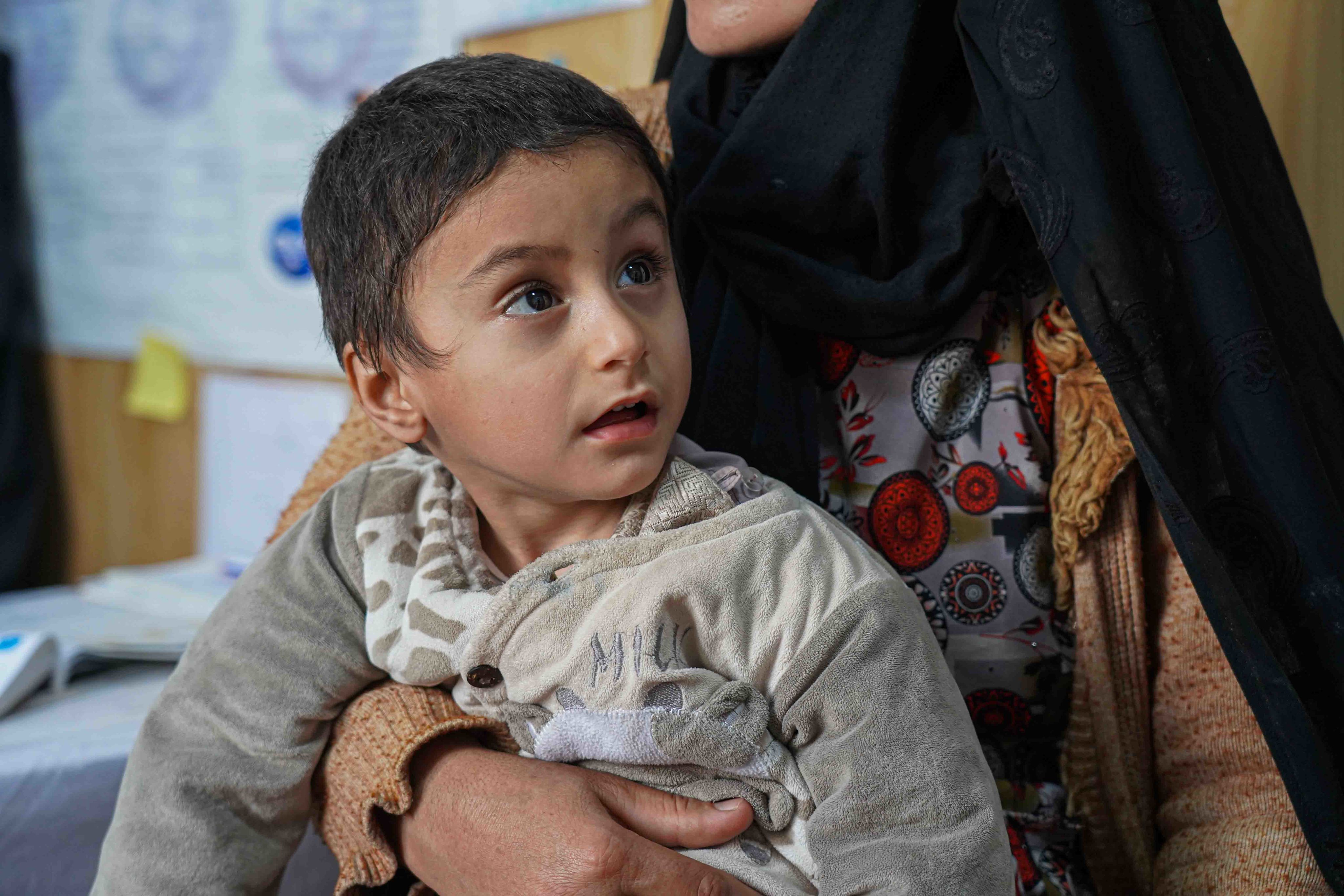
After completing treatment, parents receive counselling on how to sustain a nutritious diet for themselves and their children using whatever food is available. They also attend health awareness sessions on a range of topics, alongside regular screenings and medical care.
“This clinic is essential. We don’t have transportation to the hospital in the main district – it’s hours away. But this clinic is just minutes from our home,” shares Jamila.
She adds, “We come at least once a month, not only for malnutrition screenings and treatment but also for infections and other ailments. Two weeks ago, I came because of severe chest pain. My mother-in-law is treated here for rheumatism.”
The clinic, run by World Vision and funded by the Dutch Relief Alliance, serves around 10,000 patients in this rural area of Herat province – 10,000 people who would otherwise be unable to access any form of healthcare.
Malnutrition is preventable. It’s time for the world to see Afghanistan’s children.
